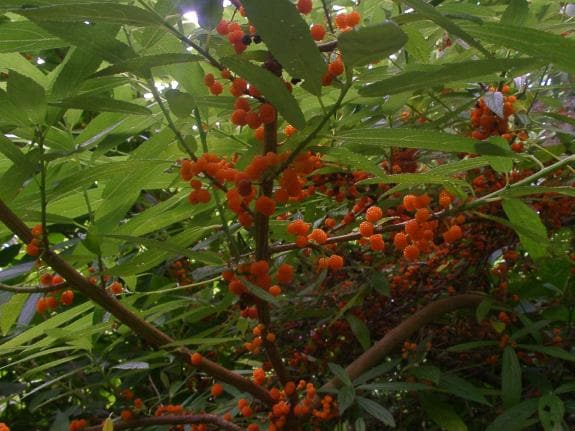Wild Rhea
A member of the nettle family, Wild Rhea has attractive reddish stems with pea-sized bright orange or yellow fruits in the autumn
Denise Bush
Viernes, 20 de octubre 2017, 10:25
Debregeasia or Wild Rhea is native to East Asia, China and the Himalayas. In its native habitat it grows on the banks of streams in forests and mountain valleys. It forms an evergreen shrub reaching up to five metres tall and was traditionally an important source of high-quality fibre used to make rope and twine.
Wild Rhea is dioecious meaning plants are either male or female and both are needed to produce fruit. The male plant has tiny single flowers whereas the female plant has heads of multiple flowers. Neither the male or female flowers are particularly showy.
The leaves are deeply veined and dark green and the tiny fruits look like balls composed of fine grains. They are edible and apparently taste like strawberries. The fruit forms directly on the branches and are difficult to harvest as they tend to disintegrate easily when ripe. They are very colourful and will stay on the shrub for a long period unless eaten by birds.
The fruits of Wild Rhea are used to flavour dishes and also in medicinal preparations. They are dried and ground into a powder before being soaked in water, the mixture is then strained and mixed with yoghurt and taken to cure diarrhea. The seeds are ground and mixed with water to treat constipation and a solution made from the leaves is used for earaches and for skin diseases. The bark is soaked in water and traditionally used to wash hair.
The wood is light and not much good for carpentry so it is turned into charcoal.
Wild Rhea is not drought or frost tolerant. It needs to be kept moist and placed in a situation with partial shade. It will grow happily in all soil types as long at it does not get waterlogged. Propagation is by seed or by stem cuttings in early summer.
